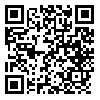Wed, Dec 3, 2025
| فارسی
Volume 25 - Special Issue
Advances in Cognitive Sciences 2023, 25 - Special Issue: 12-0 |
Back to browse issues page
Download citation:
BibTeX | RIS | EndNote | Medlars | ProCite | Reference Manager | RefWorks
Send citation to:



BibTeX | RIS | EndNote | Medlars | ProCite | Reference Manager | RefWorks
Send citation to:
Diyanati M. Figurative conceptualization of boredom in Persian. Advances in Cognitive Sciences 2023; 25 :12-0
URL: http://icssjournal.ir/article-1-1568-en.html
URL: http://icssjournal.ir/article-1-1568-en.html
University of Isfahan
Abstract: (1097 Views)
This study explores how Persian speakers think and talk about boredom. By examining linguistic expressions of boredom extracted from the Dadegan Corpus and the Google Search engine, the study sheds some light on how and using which figurative devices the emotion of the concept of boredom is understood in Persian. The analysis shows that the concept of boredom is conceptualized in Persian through metaphor, metonymy, and the interaction between metaphor and metonymy, i.e., metaphtonymy. Analyzing metaphoric expressions reveals that fifteen distinctive source concepts in Persian characterize boredom. Among these, the conceptualization of boredom as death, insanity, illness, and a container are the four most frequent metaphors in the data. A close analysis of metonymic expressions indicates that metonymic conceptualizations of boredom in Persian are specific elaborations of two common metonymic principles: the physiological effects of an emotion stand for the emotion, and the behavioral reactions of an emotion stand for the emotion. More importantly, the findings suggest that not only realistic physiological effects and behavioral reactions but also metaphorical physiological effects and behavioral reactions of boredom can stand for the emotion, i.e., boredom, in Persian. Those conceptualizations of boredom, special cases of metaphorical physiological effects/behavioral reactions, provide a clear example of the interaction between metaphor and metonymy, i.e., metaphtonymy.
Type of Study: Research |
Received: 2023/06/20 | Accepted: 2023/06/20 | Published: 2023/06/20
Received: 2023/06/20 | Accepted: 2023/06/20 | Published: 2023/06/20
Send email to the article author
| Rights and permissions | |
 |
This work is licensed under a Creative Commons Attribution-NonCommercial 4.0 International License. |





